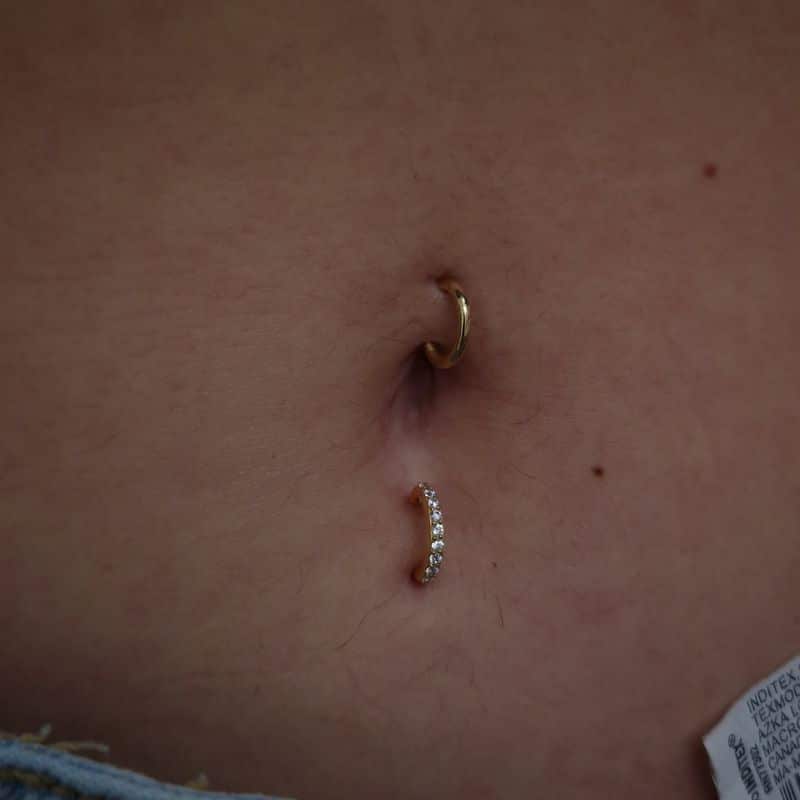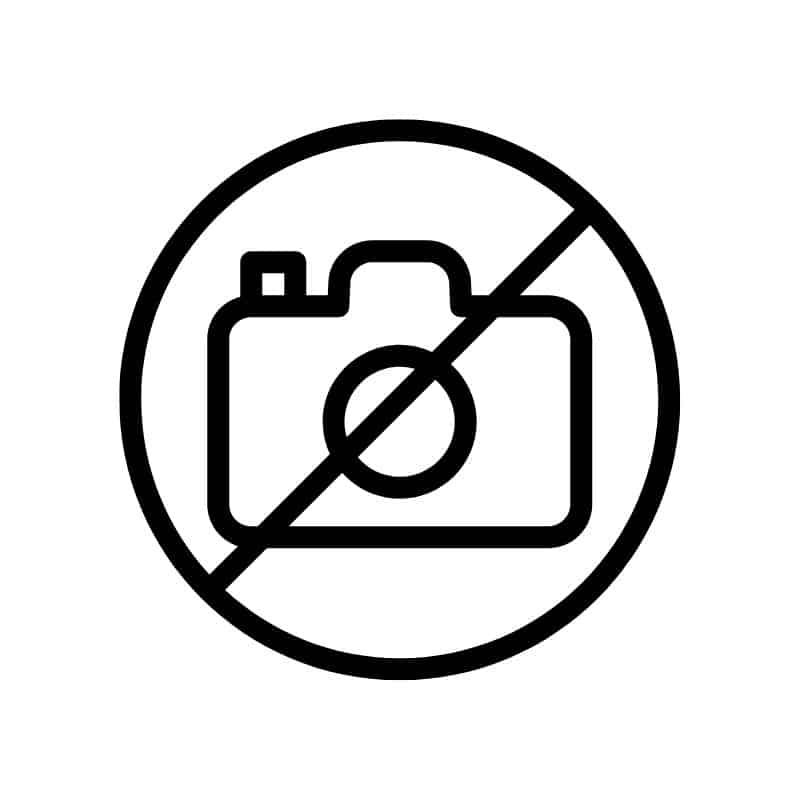Introduction to navel piercing
Placement:
The navel Piercings can be made at the upper or lower end of the navel. The variant at the upper end is more common.

Belly button piercing styles
Gallery of navel piercings



All about navel piercings
Belly button piercings: everything you need to know
History:
Belly button piercings, also known as navel piercings, have been growing in popularity since the 1990s and have established themselves as a multifaceted trend in the field of body modifications. Originally popular in the alternative scene, it now appeals to people of all styles.
Placement:
The navel Piercings can be made at the upper or lower end of the navel. The variant at the upper end is more common.
Jewelry:
To begin with, a curved barbell with a bar thickness of 1.6mm used. After the short healing period of 4 to 6 months, other types of jewelry can also be used, for example:
- Curved barbells: Curved bars with balls on both sides, with or without pendants and decorations.
- CBRs (Captive Bead Rings) / BCRs: Rings with a ball or plate that is inserted into the ring.
- CBBs (Circular Barbells): Horseshoe-shaped rings in various sizes and designs, with balls or points.
- Clicker: There are many beautiful belly button clicker rings with decorations such as cubic zirconia, patterns, snakes etc.
- Belly button plug: With or without pendant in various lengths.
Healing time:
The healing time of a belly button piercing varies from person to person, but is usually between 4 and 6 months. The fatty tissue on the belly button heals more slowly than the skin in other areas of the body. It is therefore important to care for it carefully during the healing phase. We recommend thatyou follow the care instructions carefully.
Dangers and complications:
As with any piercing, there are certain risks associated with navel piercings, such as infections, allergic reactions, inflammation, scarring, rejection of the jewelry and irritation from clothing. To minimize these risks, it is essential to be pierced by a professional piercer and to use high-quality jewelry.
Recommendation for care:
- Disinfect the piercing 3-5 times a day with a suitable piercing spray. We recommend the use of our Stechwerk Care. We have achieved the best results with this piercing spray over the years.
- Avoid touching or pulling on the piercing. Please do not use Q-tips (cotton buds) for cleaning and use a clean handkerchief for crusts.
- Cover the navel piercing with a plaster when doing sports or in case of friction.
- Avoid high-waist pants. These can irritate the navel piercing or even cause the navel piercing to become oblique.
- If you are unsure about excessive swelling, redness or pain, come and see us.
Additional information:
- Pain: The piercing of a navel piercing is perceived as moderately painful. However, the individual perception of pain can vary.
- Costs: The cost of a belly button Piercing vary depending on the jewelry. Our prices start at CHF 65 including standard jewelry.
- Jewelry change: Once the piercing has healed completely, you can change the jewelry. However, it is important to use high-quality jewelry to avoid infection.
Conclusion:
If you are thinking about getting a belly button piercing, you can drop by one of our branches at any time. We always pierce spontaneously and are happy to advise you without an appointment.
Are you ready for your belly button piercing?
Our experienced team at Stechwerk is here to provide you with a safe and professional piercing experience. Contact us now if you have any questions.
